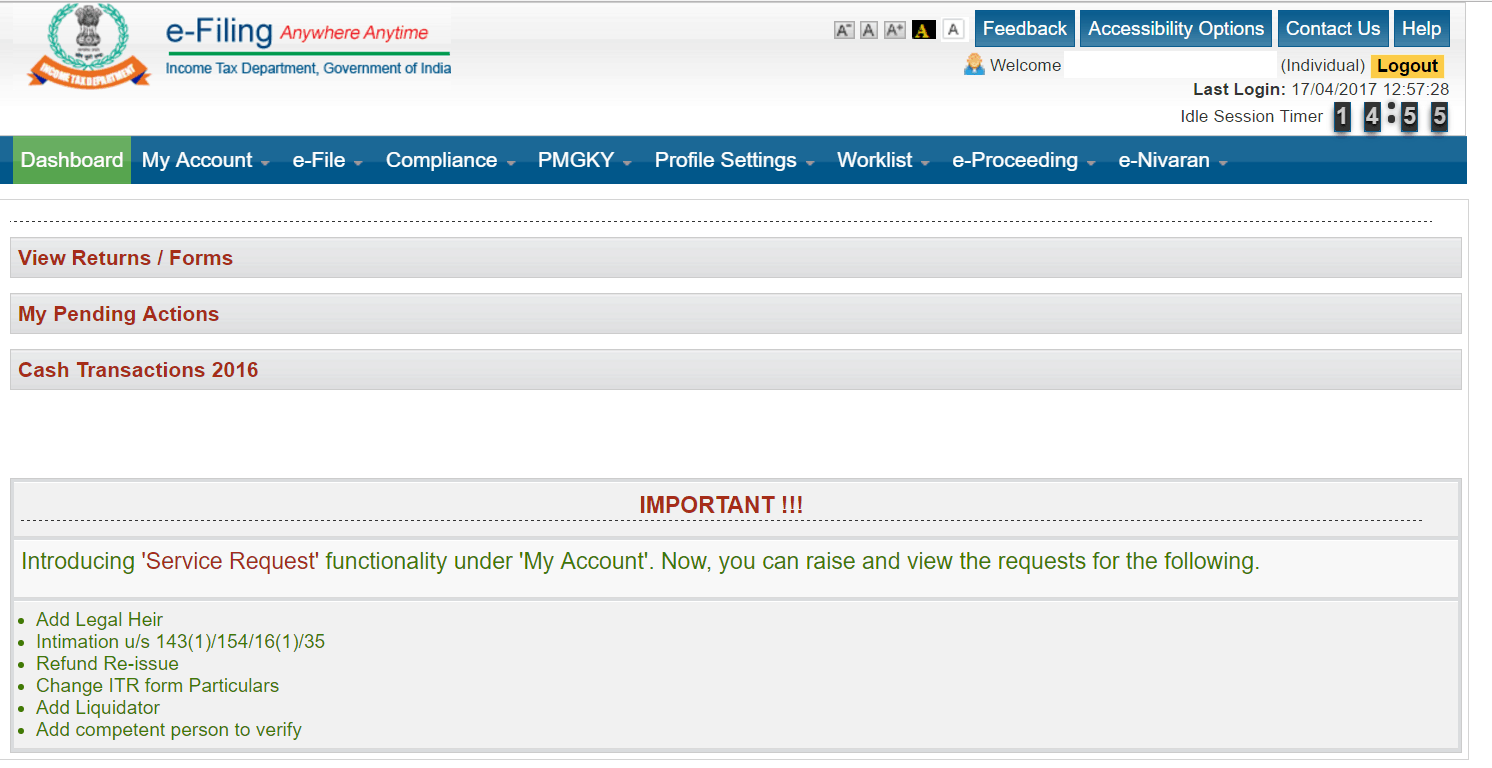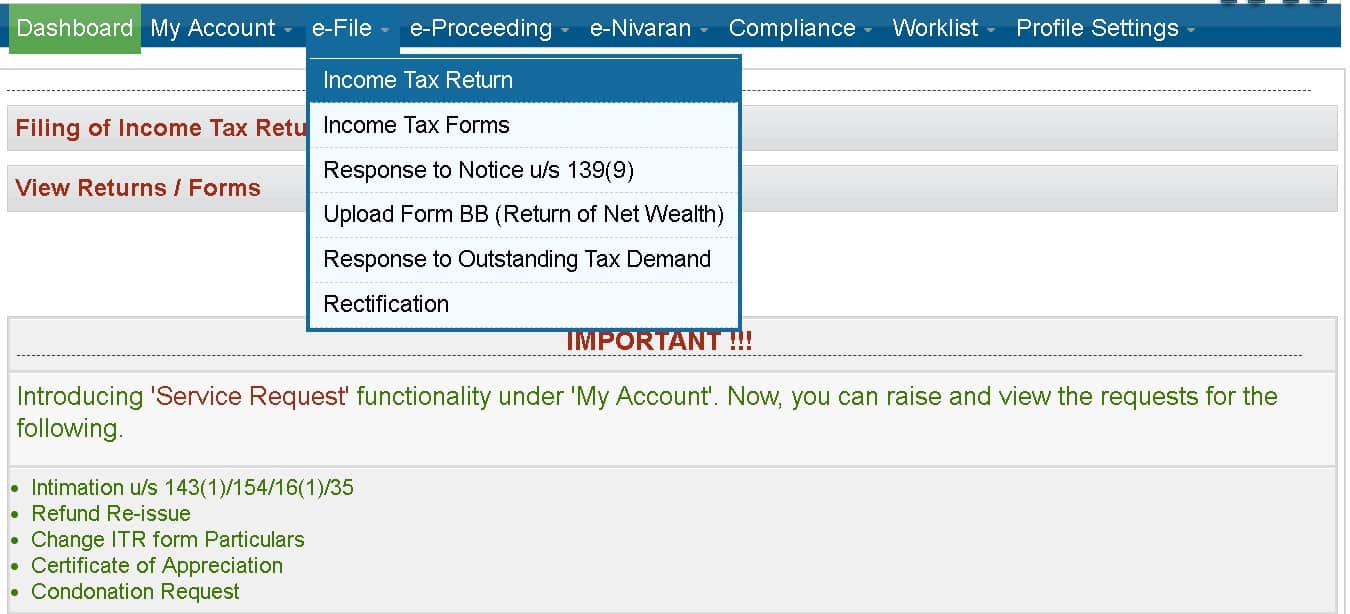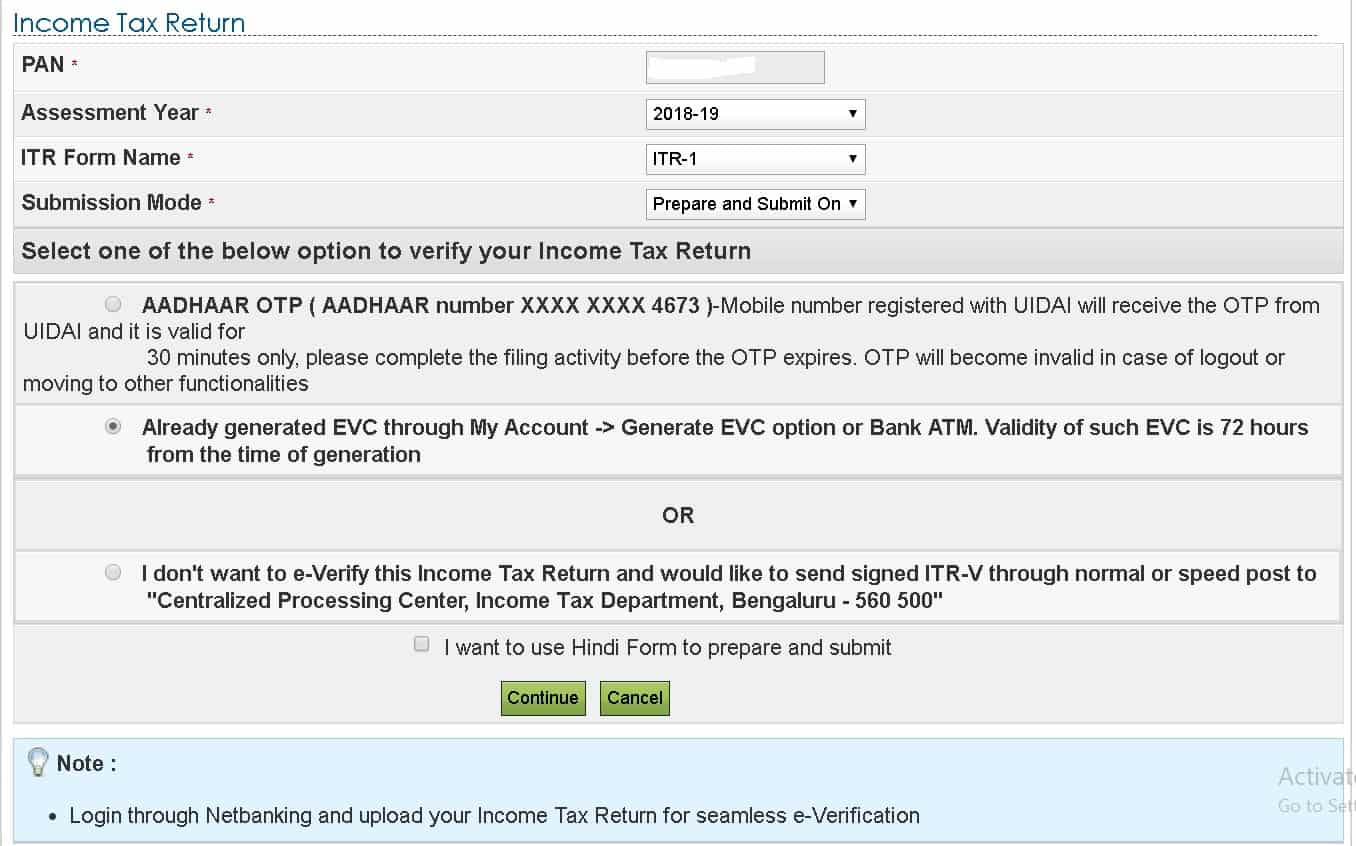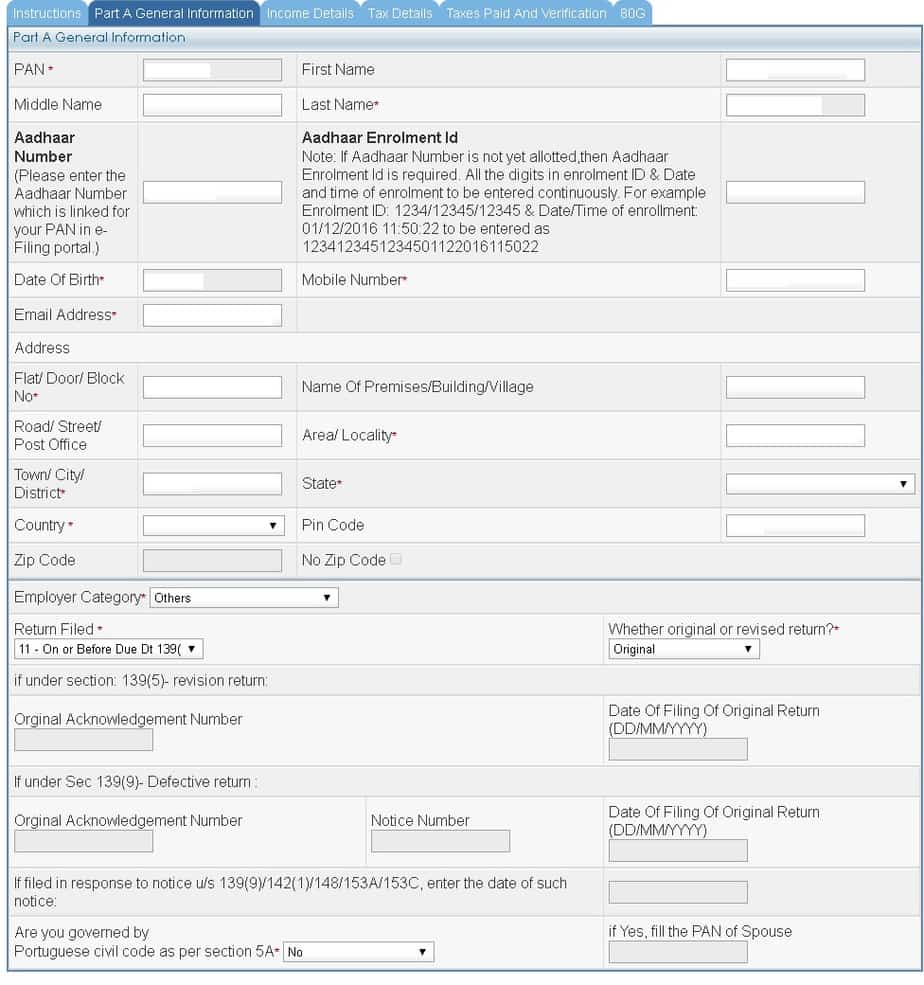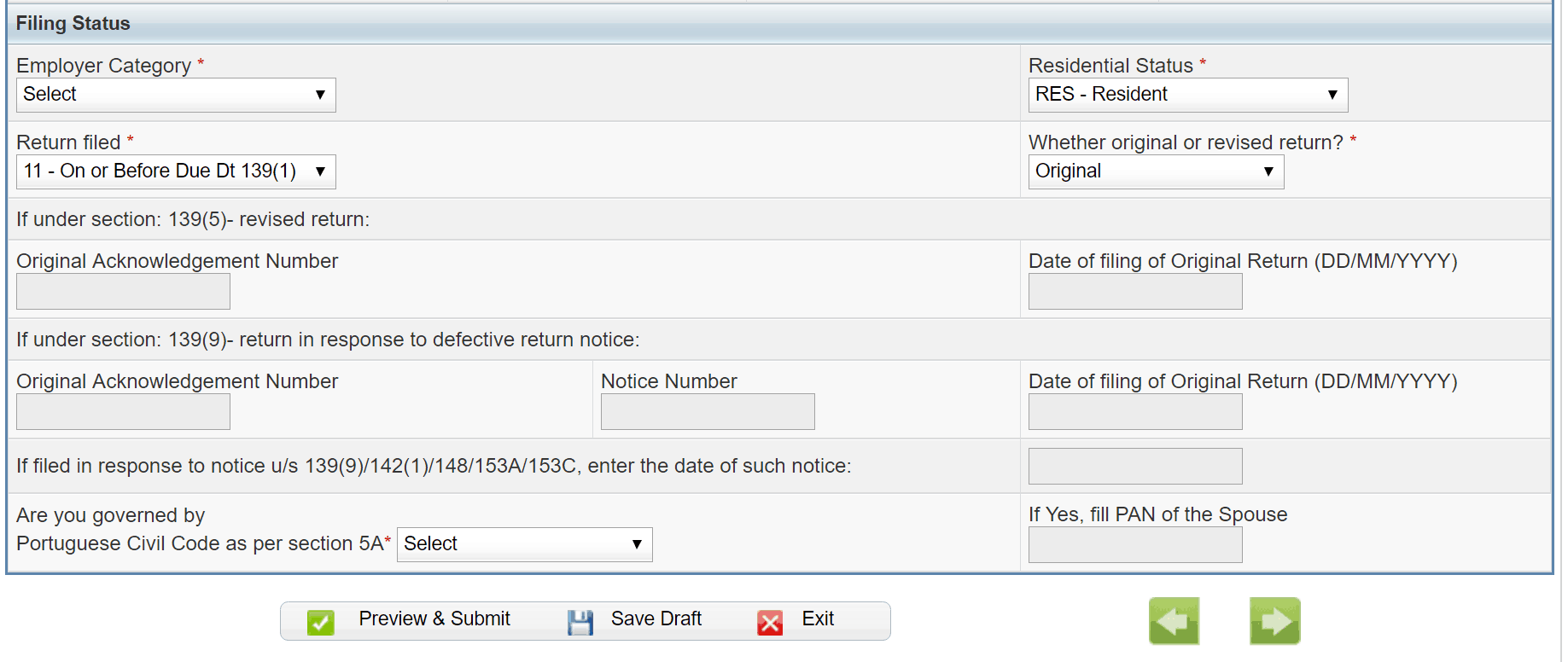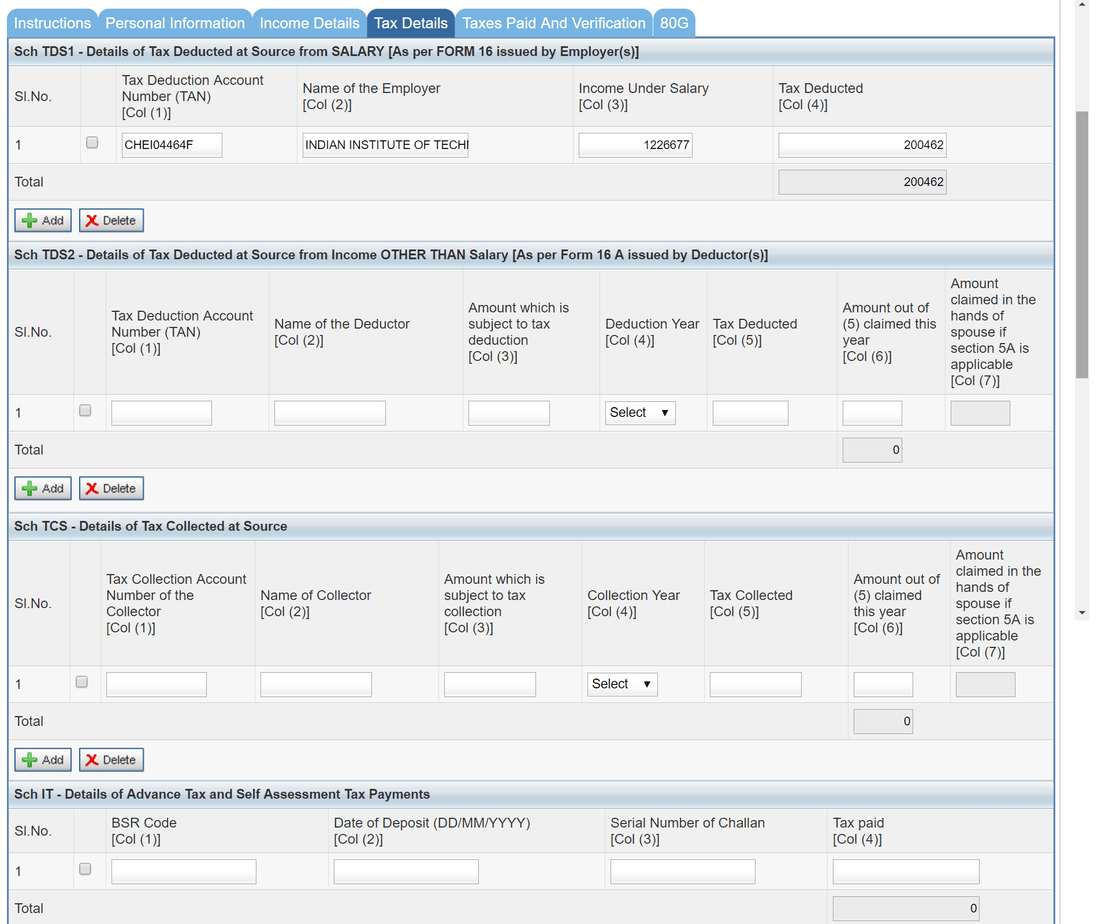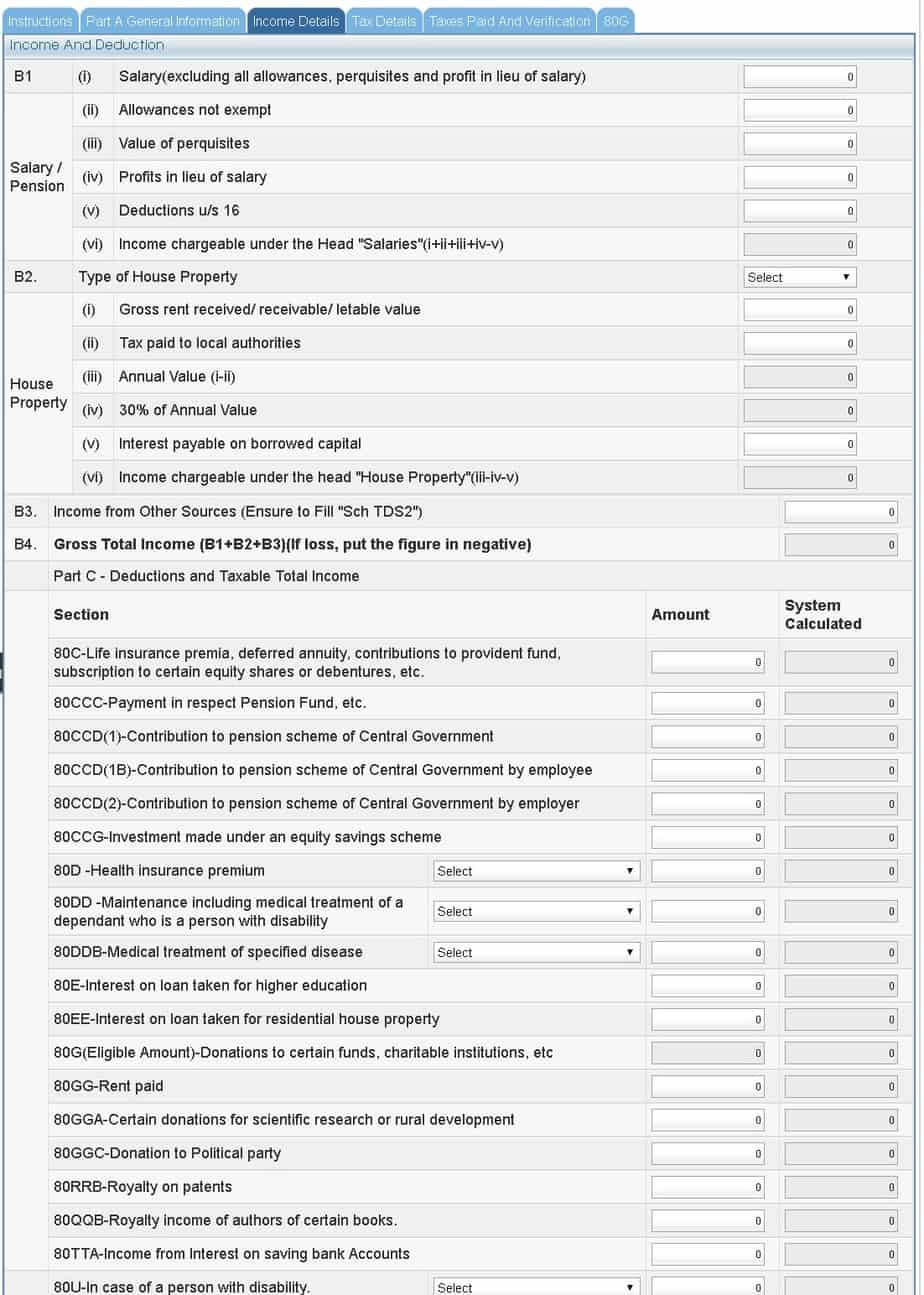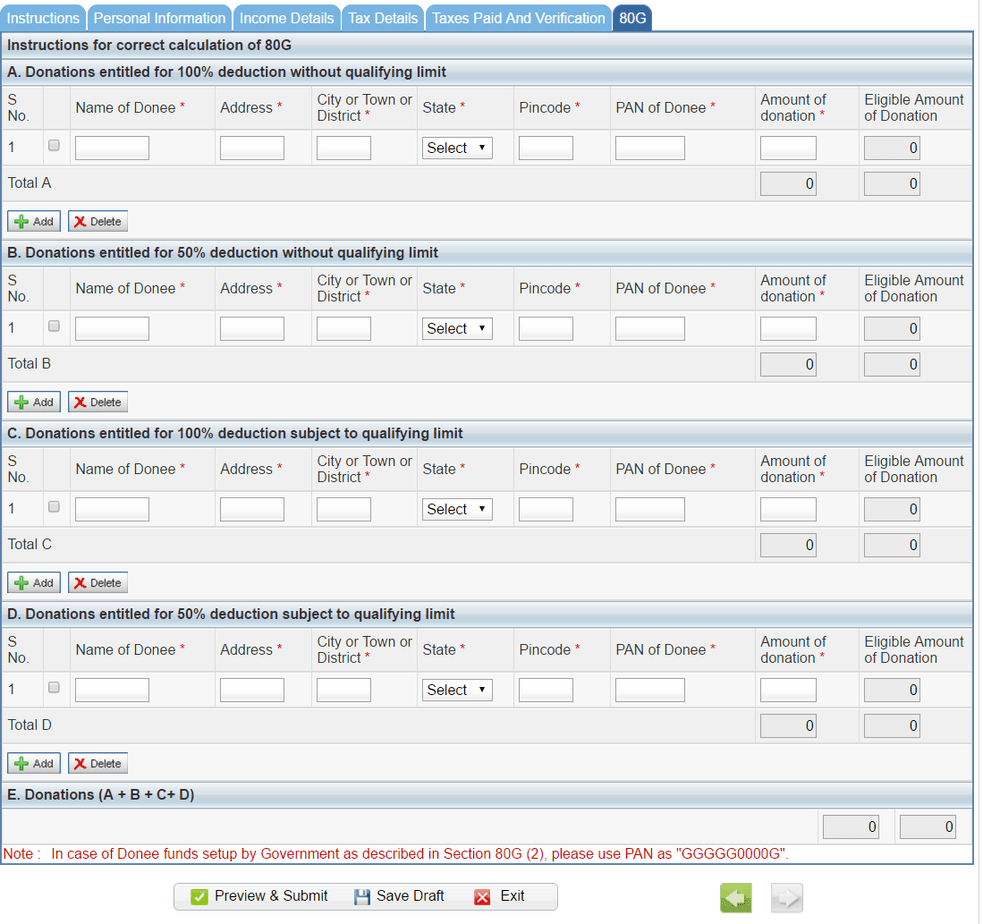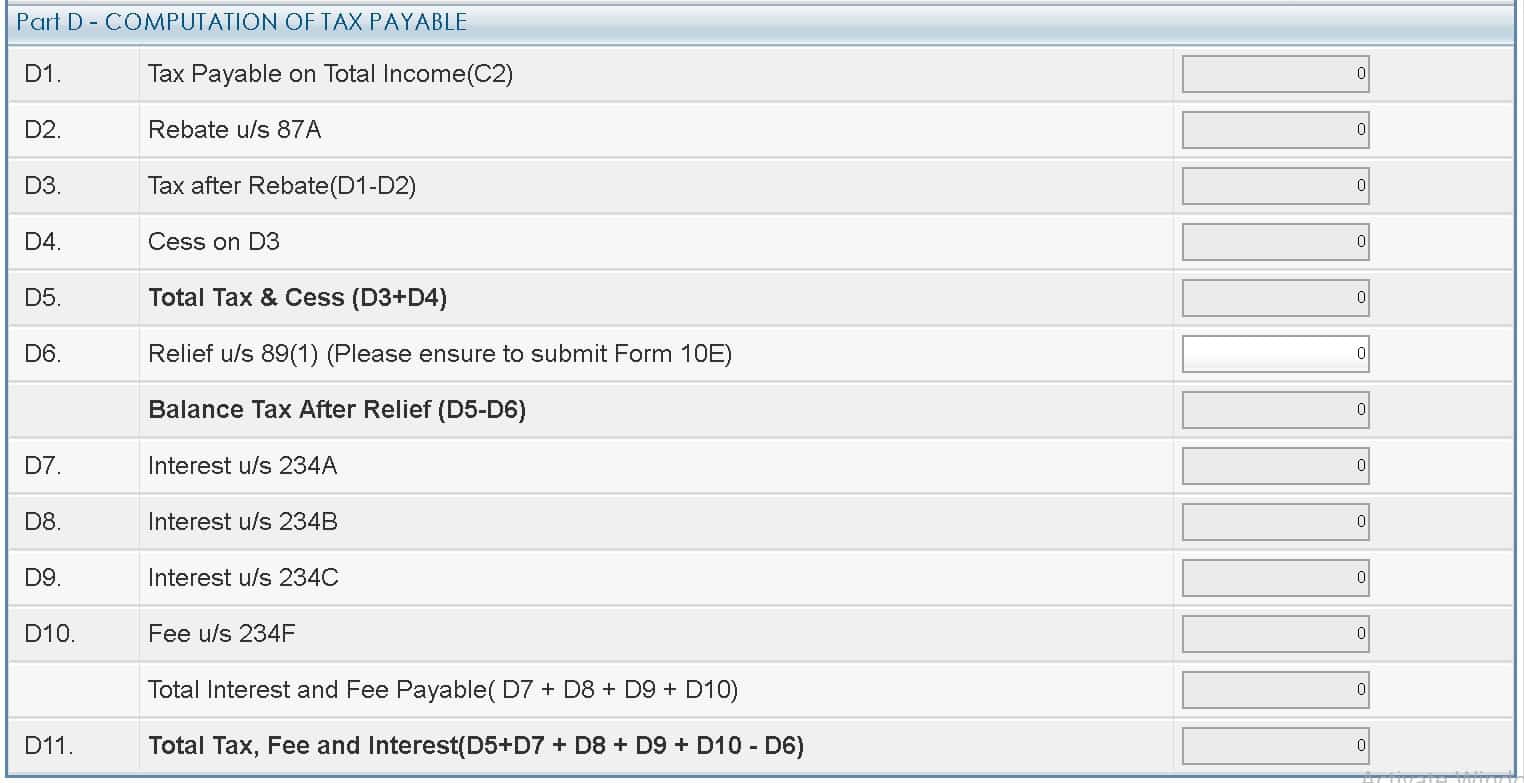Last Updated on October 1, 2023 at 5:40 pm
Here is a step by step guide to file income tax return (ITR1) for AY 2019-20. Please consider forwarding this to a person who is going to file returns for this first time. This is an updated version of a guest post by Aparna C K. You can also consult Guide to efile Income Tax Return: ITR2, ITR3 and ITR5
~~~~~~~~~~~~~~~
How to file ITR using efile website:
Create a login. This is useful for future also.
Join 32,000+ readers and get free money management solutions delivered to your inbox! Subscribe to get posts via email! (Link takes you to our email sign-up form)
🔥Want to create a complete financial plan? Learn goal-based investing? Exclusive access to our DIY tools? Increase your income with your skills? Enjoy massive discounts on our robo-advisory tool & courses! 🔥
- Go to this site: https://incometaxindiaefiling.gov.in/
- Click on Register on the top-right, to create a login. A page will appear asking for details.
- This blog targets common people and not any other user type listed. Out of the two options in the first line of the “User Type” page, select individual, unless you know that you are HUF.
- Follow the steps. Be sure to enter the correct First name, middle name and Surname as per PAN database. Otherwise check it in this link, using your PAN. https://incometaxindiaefiling.gov.in/e-Filing/Services/KnowYourJurisdictionLink.html
- Enter all the necessary details correctly, your registration will be successful. PAN no will be your user ID
- Know which ITR you are supposed to file: Use this article to find out Which ITR Form Should I use for A.Y. 2018-19?
a)If you have an income from just salary, house property and bank deposits (Savings, FD, RD, Flexi RD), it is ITR1 (total income up to 50 L)
b)If you have income specified in a) and income from selling Real Estate, Stocks, Mutual fund units, derivatives, gold etc, or you have withdrawn EPF/PPF, it is ITR2 (individual or HUF with no business income)
If in addition to the above, you (or HUF) have income from a business or proprietorship, ITR3
e) For people having a presumptive business it is ITR4 (no capital gains allowed)
For all others, it is ITR5 (other than an individual)
Login using the PAN number and password created above. You will see this image
First click on “View Form 26AS” under “my account”. This will take you to the TDS-CPC website to find out your tax credit by your employers and banks.
If your return type is ITR1 or ITR4, then you can submit the return online. For others, you will have to use the java utility and upload the XML file.
If your return type is other than those mentioned in 3 above, get them from here Download ITR . Note that you can see both excel and java utilities for ITR1, ITR2,ITR3 and ITR4S, If you have java runtime Environment 1.7 or above installed, or you are willing to install, it is advisable to use java utility. The reason is it is neater and easier to use with a Graphical User Interface (GUI) than excel utility. You will get a zip file. Java can run in linux as well. Windows batch file and linux script files are provided for running. Now that you have all the tools ready, here is how you go about filling the form.
Choose e-file —> ITR
1) Select the form named as ITR1 and Assessment year as 2018-19 (that is the financial year 2017-18), this is where newbies get confused first. You will get this screen. You can opt for Aadhaar OTP or email/mobile/ATM based e-verification. Aadhaar would be better..
Next a web interface appears which will have tabs equal to the number of sheets in ITR1 excel sheet utility or number of tabs in java utility. There is a one-one correspondence between all these 3 options. With the quick e-file option you are doing now, most of the personal information, and tax details would have got filled automatically. Note that you can fill only white cells and not grey cells. Keep saving the work often.
Check the personal information tab that will be pre-filled.
Filing Status: Entries here are fairly easy to fill. In A21, choose option 11 if you are filing before July 31st or option 12 if you are filing afterwards
Now move to the Tax Details tab. Your TDS information as in Form 16 provided by the employer and TDS information if any tax got deducted by the bank where you hold FDs should be there already. If not, it is time to contact the bank and check why they have not deposited the tax.
Now, go to Income details tab. Fill income under salary as per the Form 16, point 3.
Select house property if you have. Note that if it is self-occupied, you cannot claim HRA under section 10. If it is let out, declare the rent income in the next row.
Enter the income from other sources. This should include accrued income under Savings bank account, FD and RDs across all banks. Accrued means not necessarily credited, in case of FD and RDs.
Start filling section 80 under B4. You can claim exemption up to 1,50,000 under. 80C
Claim health insurance premium under 80D.
Self+spouse+children (all < 60Y of age) 25000 + parents: 25000 (<60Y of age)
Self+spouse+children (all < 60Y of age) 25000 + parents: 30000 (>60Y of age)
Self+spouse+children (one or more > 60Y of age) 30000 + parents: 30000 (>60Y of age)
For parents who are 80 years or more with no health insurance, than a deduction of medical expenses up to Rs.30,000/- is allowed
Claim exemption up to Rs 10,000 on savings bank portion of B3, under C17. 80TTA
If you have made any donations that are qualified for income tax exemptions, go to the last tab 80G and enter the details. You can do this, only if you have received a certificate with the details of the donee.
Come back to Income Details tab.
- Have a look at D1…D10 See if D6 is applicable to you. Try to understand all of them. If D10 is a positive number, you need to pay “Self assessment tax”(SAT). Do this by clicking on “E-Pay Tax” on the left. One way to avoid this would have been by paying “Advance Tax” before March 31st. No interest needs to be paid in that case.
- After Paying SAT, my guess is, it would appear automatically under Tax paid tab, if not, manually fill it.
- Go to Taxes paid and Verification tab.
- It should show ‘zero’ under D13. Else pay the necessary tax add the challan no under “Tax details”
- Fill all the bank details carefully. Report any small exempted income (less than or equal to Rs. 5000) in D22, for example, equity gains by selling shares or units older than a year.
- Check once again all the tabs and press submit.
You can e-verify the return by obtaining the OPT from the mobile no registered with Aadhaar.
🔥Enjoy massive discounts on our courses, robo-advisory tool and exclusive investor circle! 🔥& join our community of 7000+ users!
Use our Robo-advisory Tool for a start-to-finish financial plan! ⇐ More than 2,500 investors and advisors use this!
Track your mutual funds and stock investments with this Google Sheet!
We also publish monthly equity mutual funds, debt and hybrid mutual funds, index funds and ETF screeners and momentum, low-volatility stock screeners.





- Do you have a comment about the above article? Reach out to us on Twitter: @freefincal or @pattufreefincal
- Have a question? Subscribe to our newsletter using the form below.
- Hit 'reply' to any email from us! We do not offer personalized investment advice. We can write a detailed article without mentioning your name if you have a generic question.
Join 32,000+ readers and get free money management solutions delivered to your inbox! Subscribe to get posts via email! (Link takes you to our email sign-up form)
About The Author
 Dr M. Pattabiraman(PhD) is the founder, managing editor and primary author of freefincal. He is an associate professor at the Indian Institute of Technology, Madras. He has over ten years of experience publishing news analysis, research and financial product development. Connect with him via Twitter(X), Linkedin, or YouTube. Pattabiraman has co-authored three print books: (1) You can be rich too with goal-based investing (CNBC TV18) for DIY investors. (2) Gamechanger for young earners. (3) Chinchu Gets a Superpower! for kids. He has also written seven other free e-books on various money management topics. He is a patron and co-founder of “Fee-only India,” an organisation promoting unbiased, commission-free investment advice.
Dr M. Pattabiraman(PhD) is the founder, managing editor and primary author of freefincal. He is an associate professor at the Indian Institute of Technology, Madras. He has over ten years of experience publishing news analysis, research and financial product development. Connect with him via Twitter(X), Linkedin, or YouTube. Pattabiraman has co-authored three print books: (1) You can be rich too with goal-based investing (CNBC TV18) for DIY investors. (2) Gamechanger for young earners. (3) Chinchu Gets a Superpower! for kids. He has also written seven other free e-books on various money management topics. He is a patron and co-founder of “Fee-only India,” an organisation promoting unbiased, commission-free investment advice.Our flagship course! Learn to manage your portfolio like a pro to achieve your goals regardless of market conditions! ⇐ More than 3,000 investors and advisors are part of our exclusive community! Get clarity on how to plan for your goals and achieve the necessary corpus no matter the market condition is!! Watch the first lecture for free! One-time payment! No recurring fees! Life-long access to videos! Reduce fear, uncertainty and doubt while investing! Learn how to plan for your goals before and after retirement with confidence.
Our new course! Increase your income by getting people to pay for your skills! ⇐ More than 700 salaried employees, entrepreneurs and financial advisors are part of our exclusive community! Learn how to get people to pay for your skills! Whether you are a professional or small business owner who wants more clients via online visibility or a salaried person wanting a side income or passive income, we will show you how to achieve this by showcasing your skills and building a community that trusts and pays you! (watch 1st lecture for free). One-time payment! No recurring fees! Life-long access to videos!
Our new book for kids: “Chinchu Gets a Superpower!” is now available!


Must-read book even for adults! This is something that every parent should teach their kids right from their young age. The importance of money management and decision making based on their wants and needs. Very nicely written in simple terms. - Arun.Buy the book: Chinchu gets a superpower for your child!
How to profit from content writing: Our new ebook is for those interested in getting side income via content writing. It is available at a 50% discount for Rs. 500 only!
Do you want to check if the market is overvalued or undervalued? Use our market valuation tool (it will work with any index!), or get the Tactical Buy/Sell timing tool!
We publish monthly mutual fund screeners and momentum, low-volatility stock screeners.
About freefincal & its content policy. Freefincal is a News Media Organization dedicated to providing original analysis, reports, reviews and insights on mutual funds, stocks, investing, retirement and personal finance developments. We do so without conflict of interest and bias. Follow us on Google News. Freefincal serves more than three million readers a year (5 million page views) with articles based only on factual information and detailed analysis by its authors. All statements made will be verified with credible and knowledgeable sources before publication. Freefincal does not publish paid articles, promotions, PR, satire or opinions without data. All opinions will be inferences backed by verifiable, reproducible evidence/data. Contact information: To get in touch, use this contact form. (Sponsored posts or paid collaborations will not be entertained.)
Connect with us on social media
- Twitter @freefincal
- Subscribe to our YouTube Videos
- Posts feed via Feedburner.
Our publications
You Can Be Rich Too with Goal-Based Investing
 Published by CNBC TV18, this book is meant to help you ask the right questions and seek the correct answers, and since it comes with nine online calculators, you can also create custom solutions for your lifestyle! Get it now.
Published by CNBC TV18, this book is meant to help you ask the right questions and seek the correct answers, and since it comes with nine online calculators, you can also create custom solutions for your lifestyle! Get it now.Gamechanger: Forget Startups, Join Corporate & Still Live the Rich Life You Want
 This book is meant for young earners to get their basics right from day one! It will also help you travel to exotic places at a low cost! Get it or gift it to a young earner.
This book is meant for young earners to get their basics right from day one! It will also help you travel to exotic places at a low cost! Get it or gift it to a young earner.Your Ultimate Guide to Travel
 This is an in-depth dive into vacation planning, finding cheap flights, budget accommodation, what to do when travelling, and how travelling slowly is better financially and psychologically, with links to the web pages and hand-holding at every step. Get the pdf for Rs 300 (instant download)
This is an in-depth dive into vacation planning, finding cheap flights, budget accommodation, what to do when travelling, and how travelling slowly is better financially and psychologically, with links to the web pages and hand-holding at every step. Get the pdf for Rs 300 (instant download)